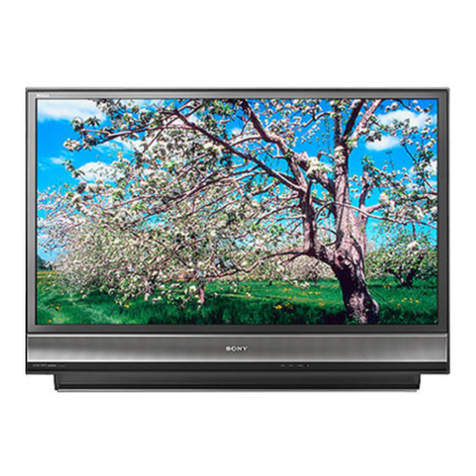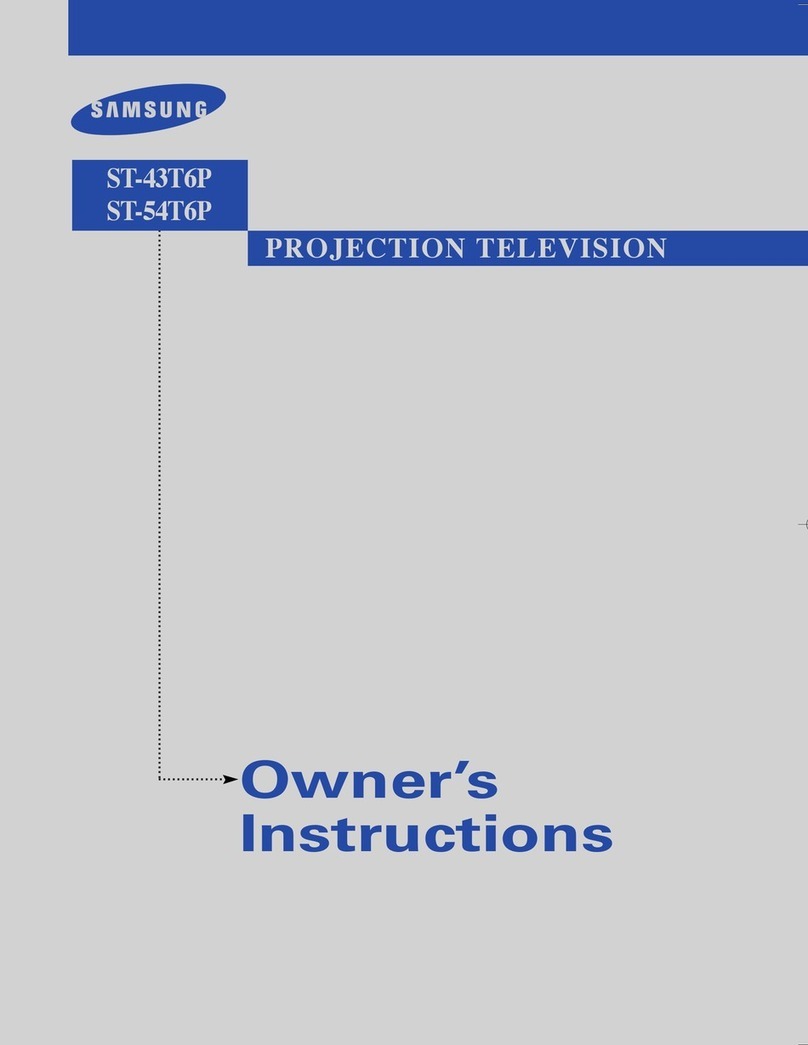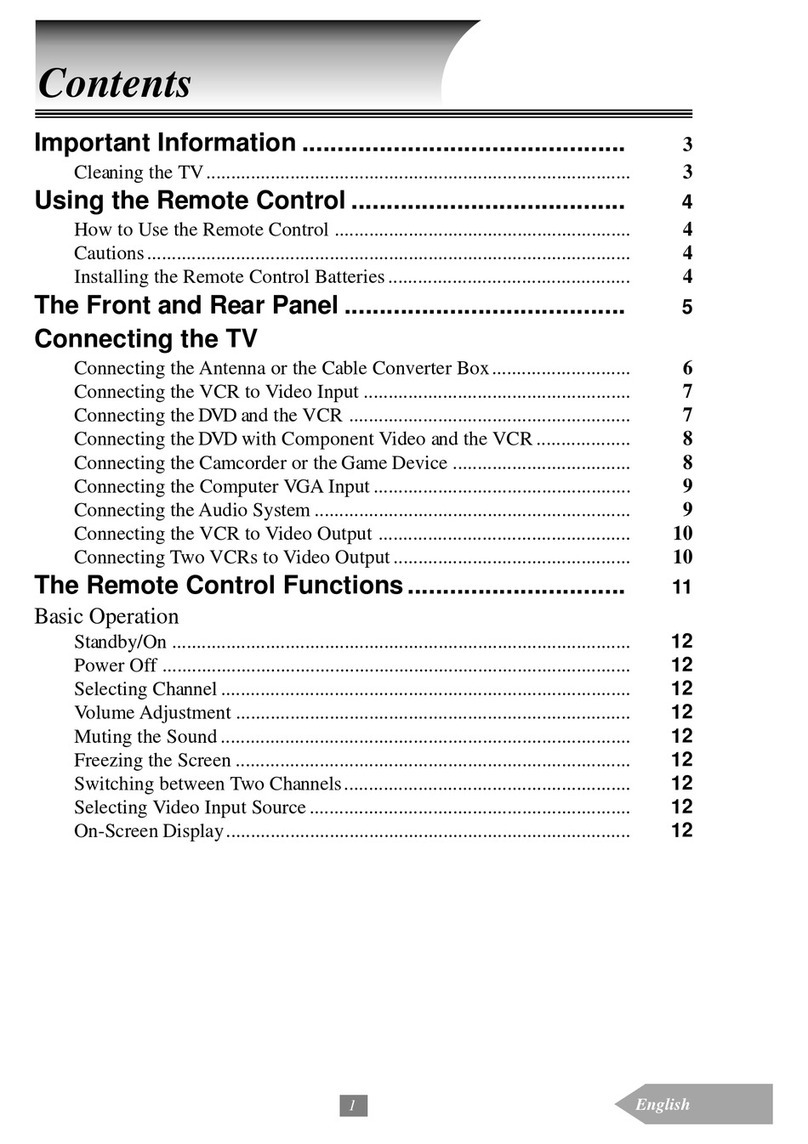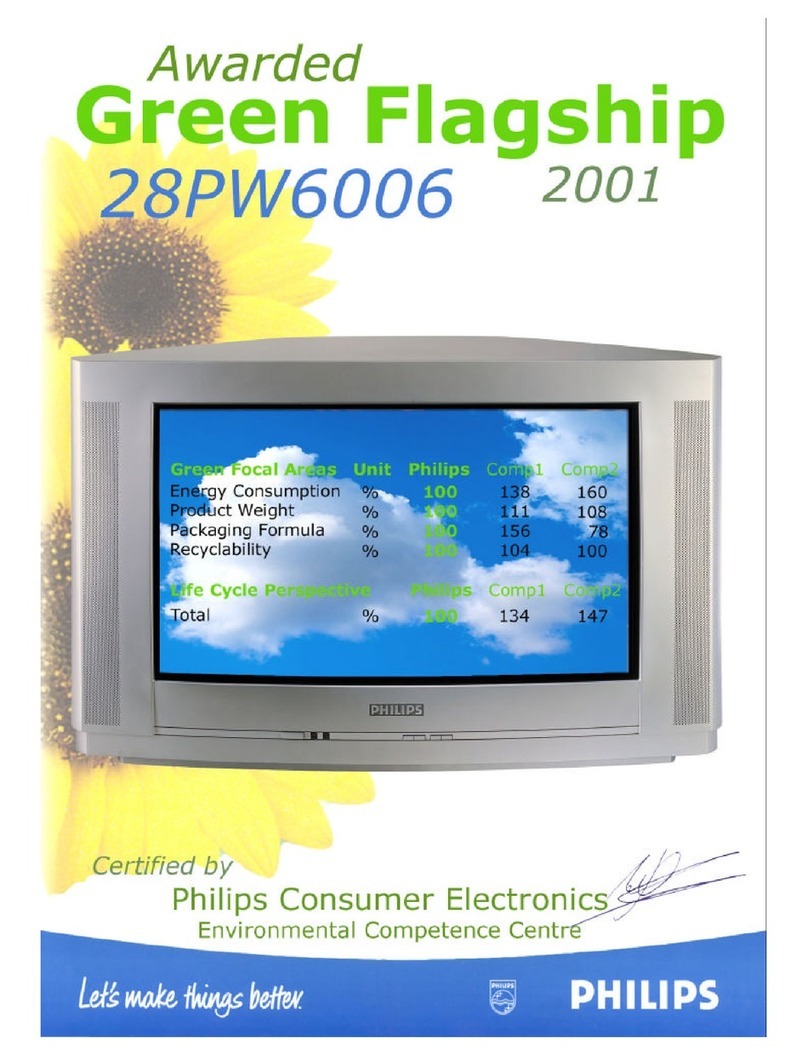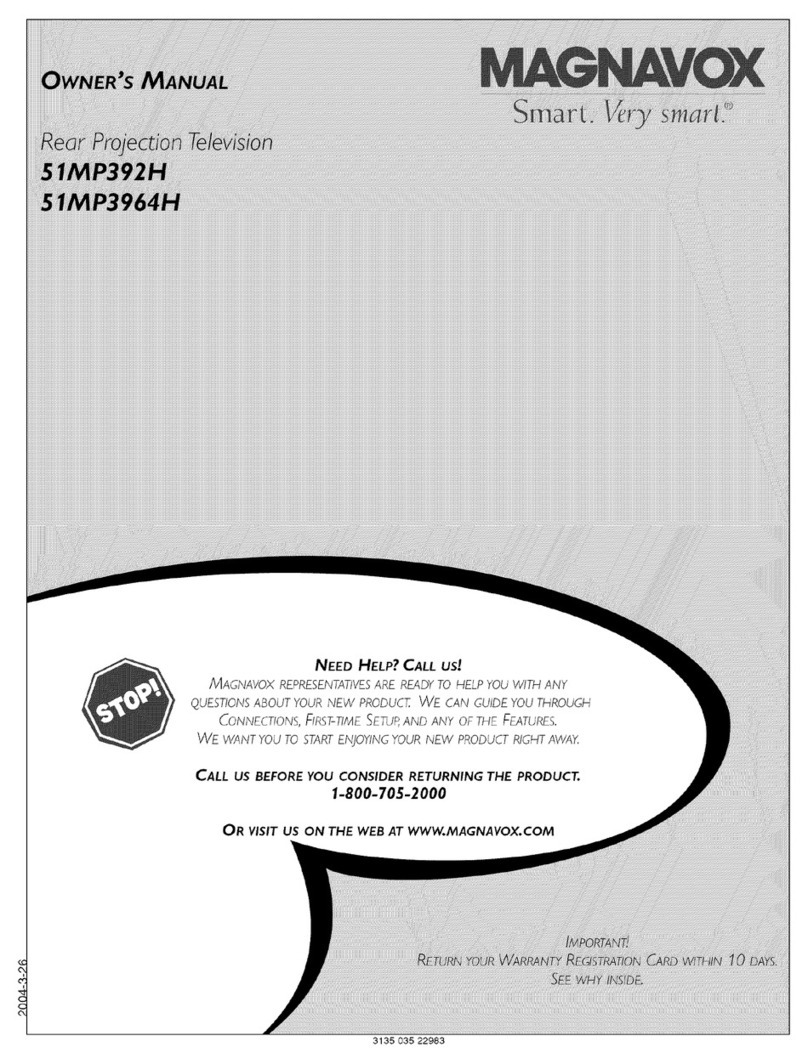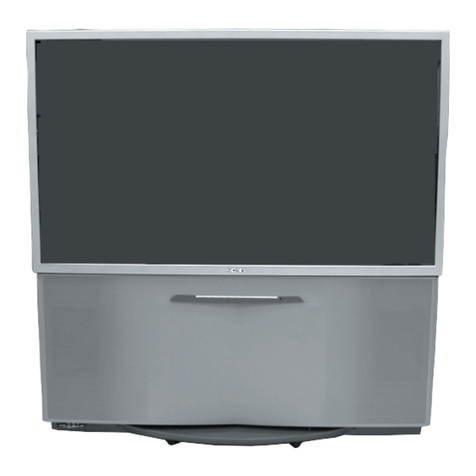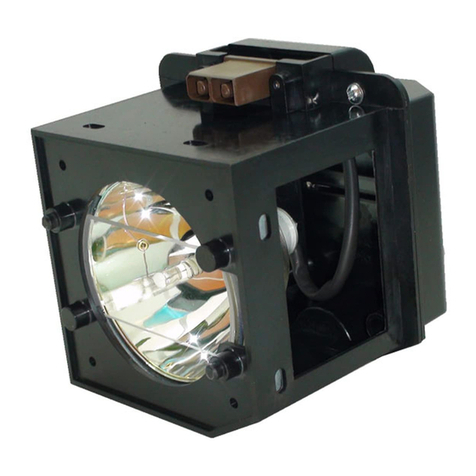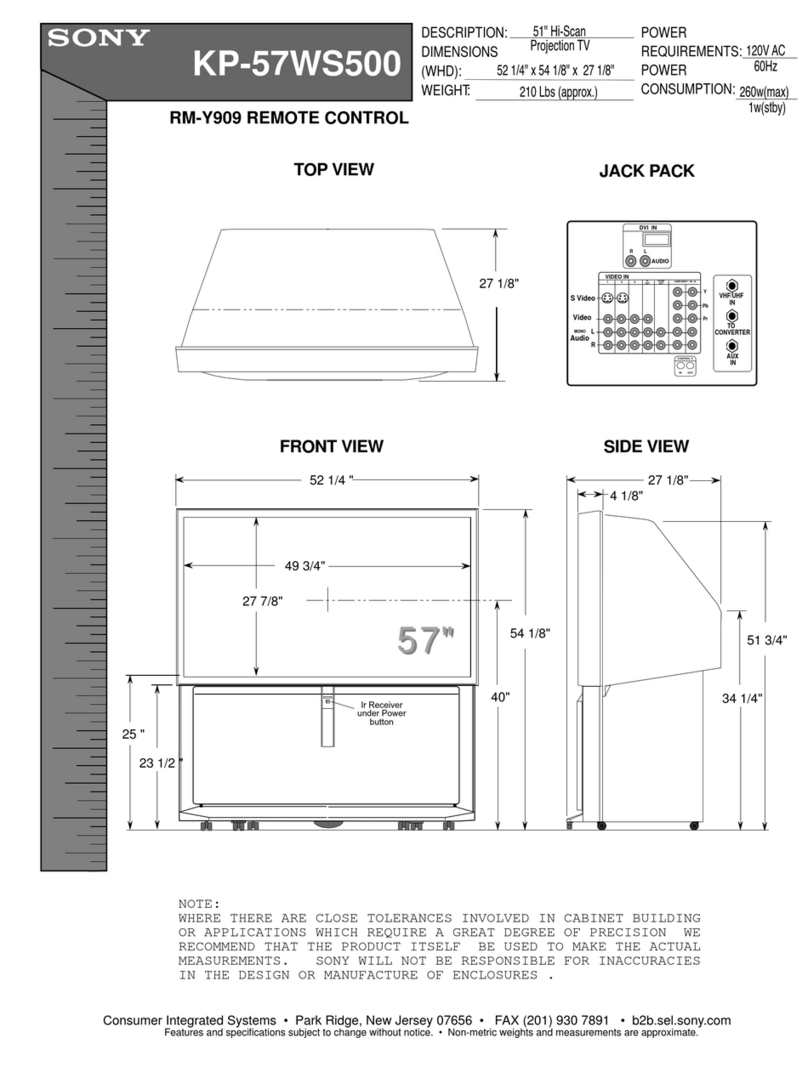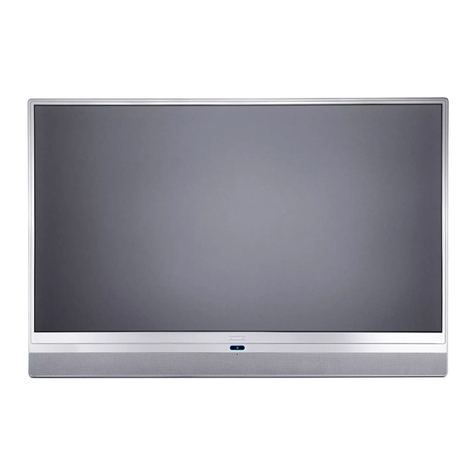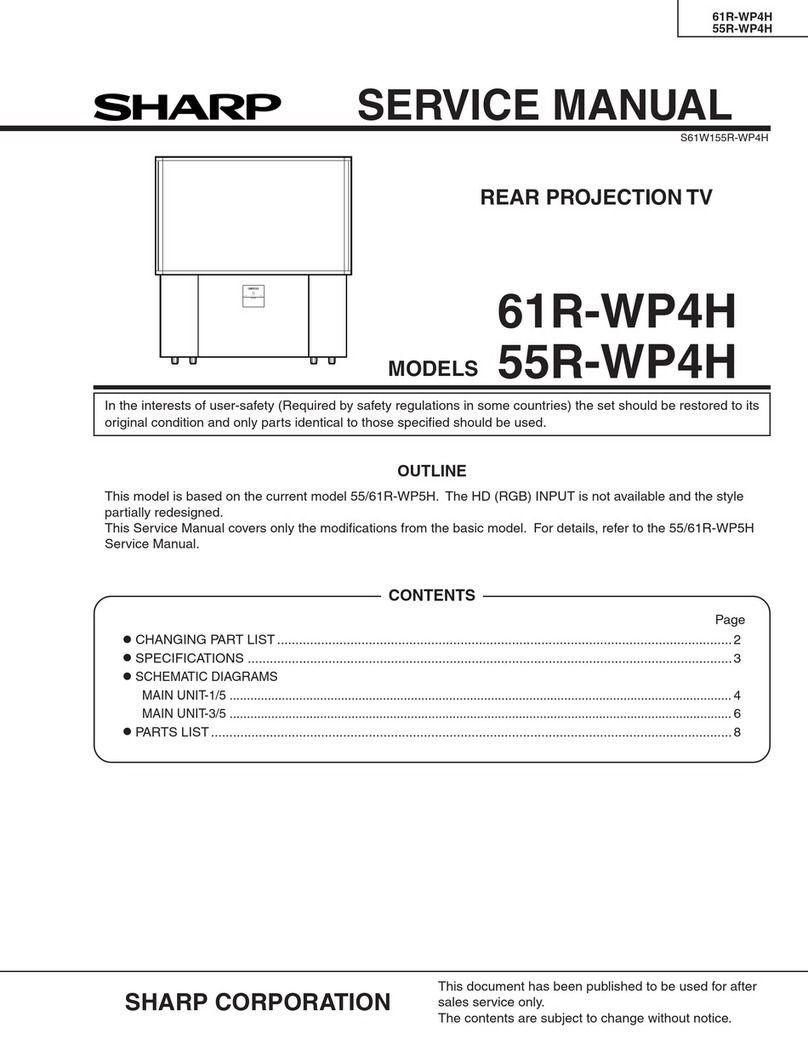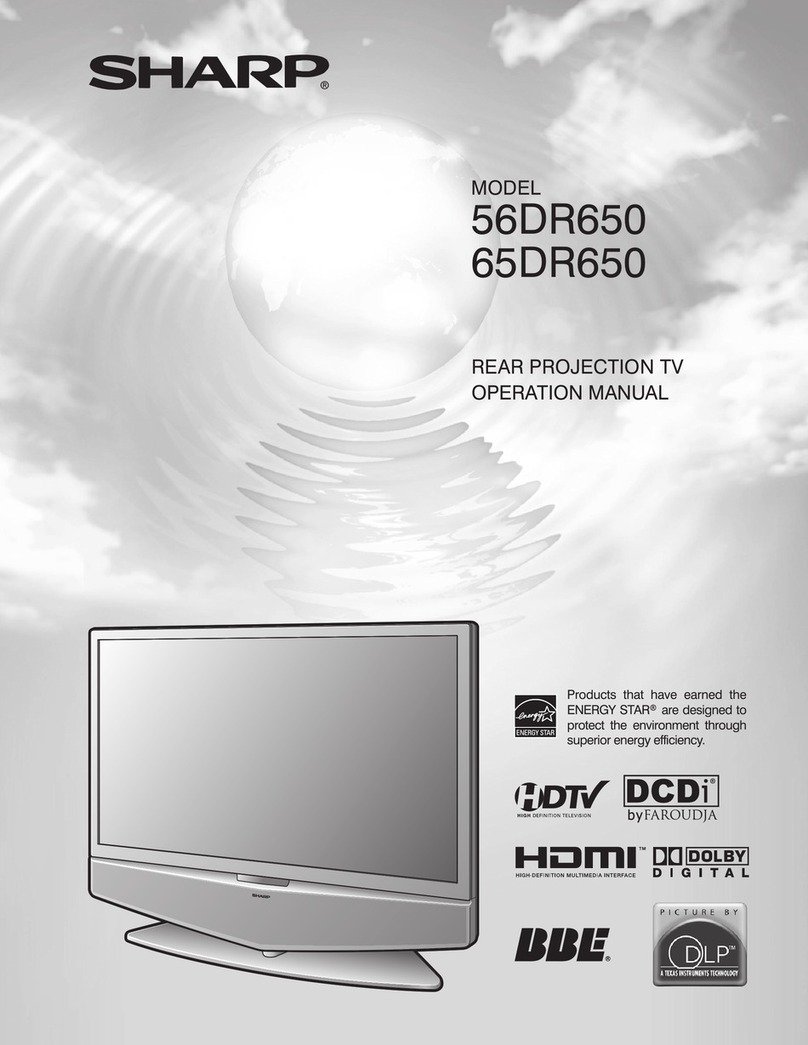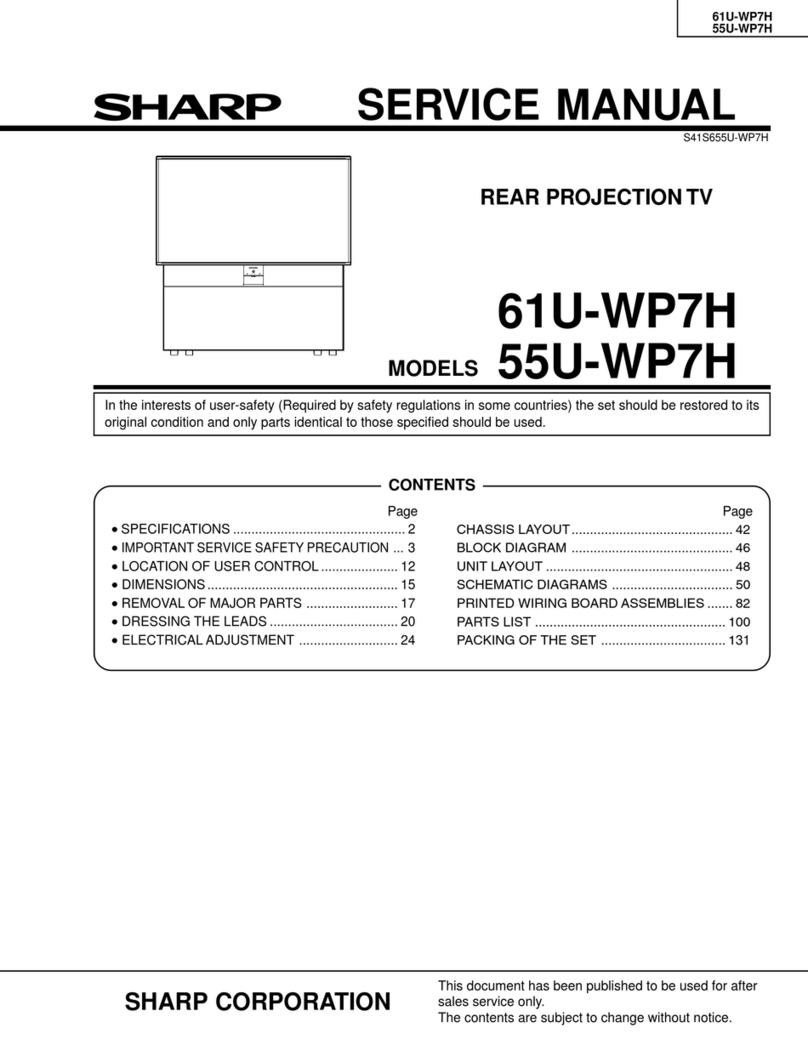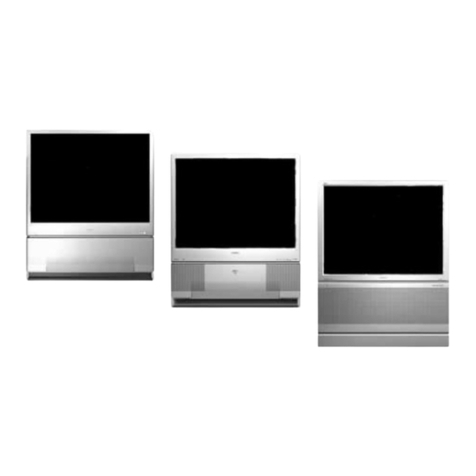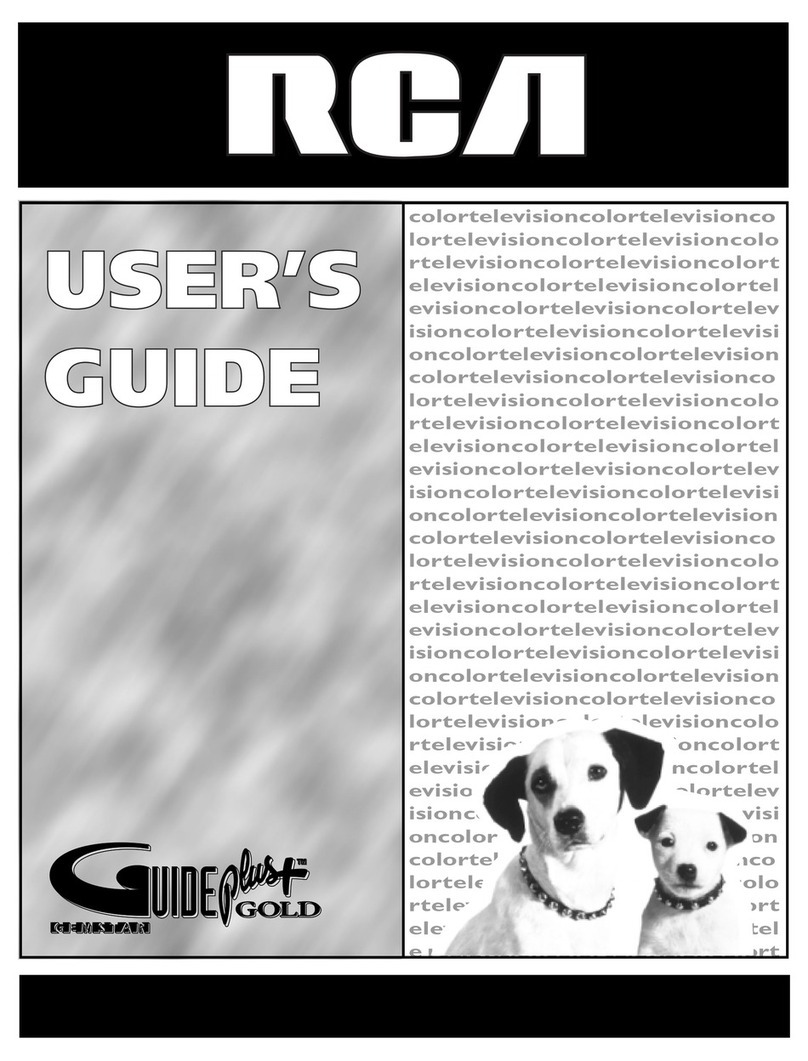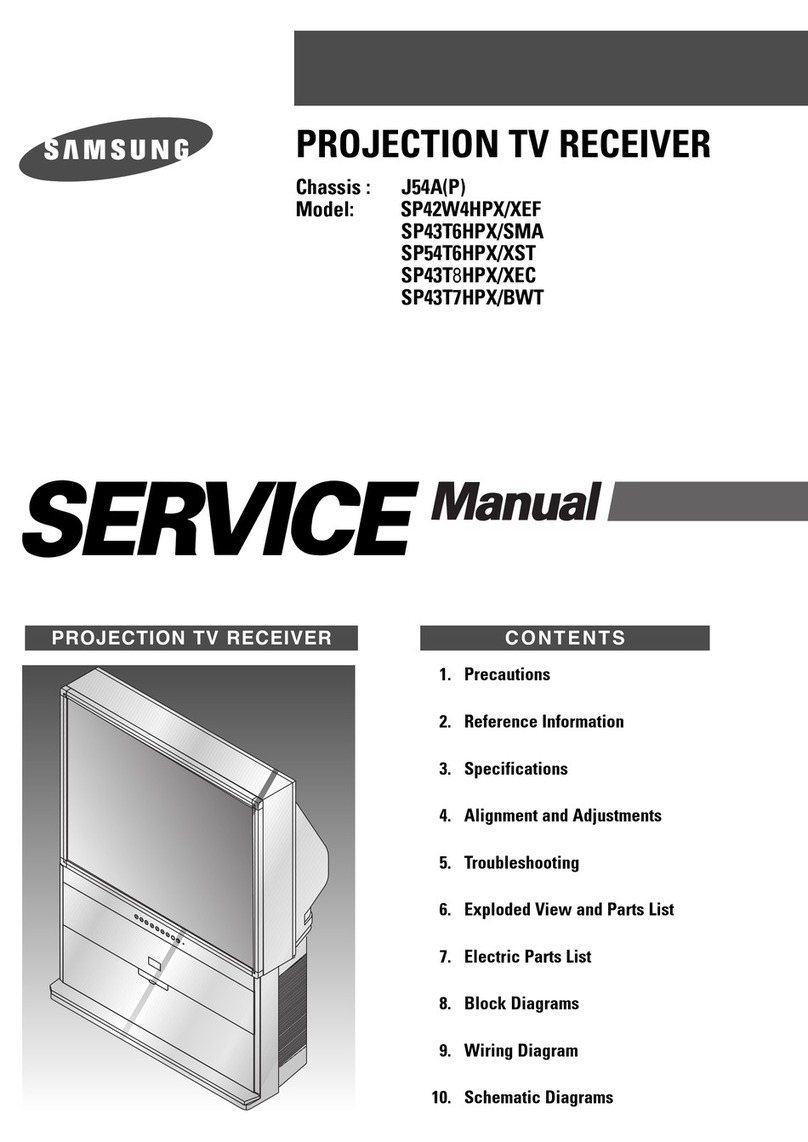
8
61R-WP4H
55R-WP4H
Ref. No. Part No. ★Description Code
Ref. No. Part No. ★Description Code
PARTS LIST
PARTS REPLACEMENT
Replacement parts which have these special safety characteristics
identified in this manual; electrical components having such features
are identified by åand shaded areas in the Replacement Parts Lists
and Schematic Diagrams. The use of a substitute replacement part
which dose no have the same safety characteristic as the factory
recommended replacement parts shown in this service manual may
create shock, fire or other hazards.
"HOW TO ORDER REPLACEMENT PARTS"
To have your order filled promptly and correctly, please furnish the
following informations.
1. MODEL NUMBER 2. REF. NO.
3. PART NO. 4. DESCRIPTION
in USA: Contact your nearest SHARP Parts Distributor to order.
For location of SHARP Parts Distributor, Please call Toll-
Free; 1-800-BE-SHARP
★MARK: SPARE PARTS-DELIVERY SECTION
çMARK : X- RAY RELATED PARTS
PRINTED WIRING BOARD ASSEMBLIES
(NOT REPLACEMENT ITEM)
DSETUA232FMV1S
M Service chassis DC
PWB-A
DUNTKA232WEV1 – Main Unit —
CABINET PARTS
2 GCOVA1051MESB M Control Cover AR
3 GDORF1117MESB M Front Door AL
4 HGRL-5004MESA M Speaker Grille
(61R
-WP4H
)
BP
4 HGRL-5003MESA M Speaker Grille
(55R
-WP4H
)
BT
7 HPNLC1107MEKB M Control Panel AQ
10 CWAKP0109ME02 M Frame-Top (61R-WP4H) BQ
10 CWAKP0108ME02 M Frame-Top (55R-WP4H) BP
11 CWAKP0106ME02 M Frame-Bottom(61R-WP4H) AZ
11 CWAKP0107ME02 M Frame-Bottom(55R-WP4H) AY
12 CWAKP0103ME02 M Frame-Side, x2
(61R-WP4H)
AW
12 CWAKP0105ME02 M Frame-Side, x2
(55R-WP4H)
AX
24 HBDGB3121CESB M Badge AF
29 HiNDP0111MEKZ M Indication Plate-Rear AX
35 CHLDZ0105ME02 M Corner (RT), x2 AE
36 CHLDZ0106ME02 M Corner (LT), x2 AE
PWB-A: DUNTKA232WEV1
MAIN UNIT
RESISTOR
R3627 VRS-CY1JF103J J 10k 1/16W Metal Oxide AA
SUPPLIED ACCESORRIES
TGAN-1006MEZZ M Registration Card AD
TiNS-7360MEZZ M Operation Manual AK
SPAKC0681MEZZ – Packing Case, Top —
(61R-WP4H)
SPAKC0684MEZZ – Packing Case, Top —
(55R-WP4H)
PACKING PARTS
(NOT REPLACEMANT ITEM)
